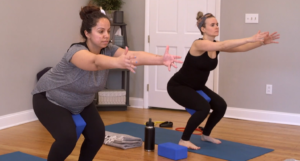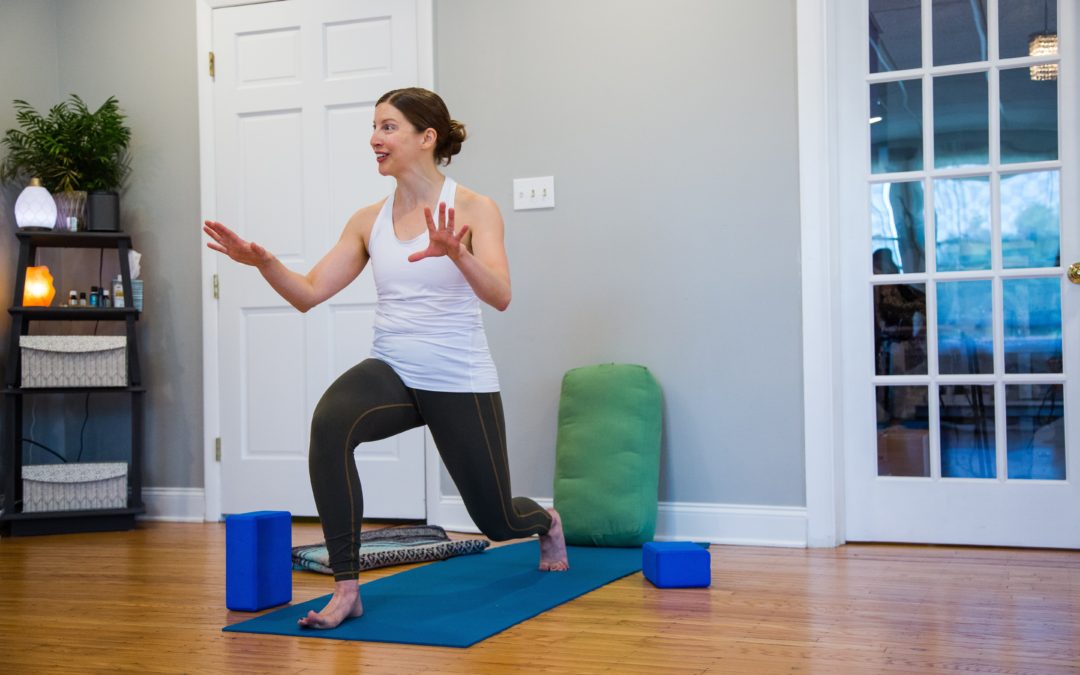Labor, birth and postpartum recovery are athletic feats of strength, flexibility, stamina, endurance and resilience.
Phew! That’s a lot to process right now – wherever you are in your pregnancy. Take a deep breath and relax, mama. I’ve got you covered with five ways to transform your basic prenatal workouts into pumped up PRO-natal training sessions.
1. Pacing for a marathon versus a sprint
Two reasons: a) safety for now, and, b) endurance for later (i.e. potentially long labor)
Make sure you can pass the “talk test” throughout your entire workout. If you are with a buddy, keep a light conversation going. If you are going solo, sing along to your music or check yourself by vocalizing a few words – or, my personal favorite, a few “woos!” – when you feel your heart rate going up to stay in a safe cardio zone).
When guiding personal training clients and students through a prenatal workout geared towards the marathon of labor, I firmly encourage active recovery versus full-stop rest throughout a 60-minute session. Active recovery intervals happen in between sets or sequences and look like walking, dynamic stretching or hydrating. Labor is a whole body/mind/spirit experience of an undetermined length of time that will probably force us to move through unexpected conditions. I try to emphasize that we don’t train for certainty, control and comfort through the process; we train to respond to uncertainty and discomfort with a sense of control by way of our breath and movement. And, finally, we condition our body/mind/spirit to go the distance, transition across the finish line and then… keep going. With every prenatal workout, try setting the intention to bolster and energize versus burn out and deplete yourself. If you treat today’s workout like a sprint, you may end up sidelined tomorrow with pain, strain or burnout. Aim to build and preserve your capacity to do at least 30 minutes of moderate intensity training most days.
2. Feeling sensations of struggle with healthy detachment
Along with pacing for endurance, my clients are put through the paces of strength training to increase tolerance of discomfort and “good pain.” We practice embodying a healthy detachment towards the sensation of struggle: that burn, quiver, fatigue and near-failure of your muscles. In other words: we practice going beyond the burn – transcending the momentary struggle by “latching” on to something outside of the body. The best examples of this are counting exact reps and breaths, or moving to the beat of the music for the duration of a set or sequence. Conversely, zeroing in on the sensation you’re feeling at any given moment with non-judgmental statements can help you navigate struggle without dragging yourself down with dramatic interpretations. For instance: “My legs are on fire” “My arms are definitely feeling the burn” or even “I’m really workout out over here” are validating and empowering as opposed to something like “I don’t know why this is so hard for me today” or “I have no upper body strength” or “My legs are so weak” which are all going to immediately take the wind out of your sails and weigh you down even more.
All of this is to say that struggling and burning through a workout is the crux of improving your strength, stamina and pain tolerance for labor, birth and beyond.
“Struggle is the space through which strength grows.” -BodyWiseMama
3. Holding contractions in muscles (i.e. isometric strength training)
 Things like squat, lunge and bridge holds are great for training your mind-to-muscle power for pushing through labor. But, I also love to throw in isometric upper body and core exercises to my clients’ prenatal workouts as another way to practice what I call complementary breathing while the intensity of the muscle burn builds. In other words, try to maintain the same pace, depth and intensity of your breath for as long as possible until you absolutely need to either a) relax and release the contraction in the muscle (i.e. burnout or “failure”), or, b) quicken, deepen or intensify the breath in order to match and even go beyond the burn for a more seconds. You can read more on breathing patterns with tip #4 below.
Things like squat, lunge and bridge holds are great for training your mind-to-muscle power for pushing through labor. But, I also love to throw in isometric upper body and core exercises to my clients’ prenatal workouts as another way to practice what I call complementary breathing while the intensity of the muscle burn builds. In other words, try to maintain the same pace, depth and intensity of your breath for as long as possible until you absolutely need to either a) relax and release the contraction in the muscle (i.e. burnout or “failure”), or, b) quicken, deepen or intensify the breath in order to match and even go beyond the burn for a more seconds. You can read more on breathing patterns with tip #4 below.
Spice up your rep routine every once in a while with a hold of the muscle contraction for as long as possible. Here are a few examples to try:
10 squats + squat hold for 5 breaths (push to the top on the 5th exhale and repeat) x 3-4 sets
10 biceps curls + 90-degree biceps hold x 5 breaths (release slow and repeat) x 3-4 sets
Cactus arm hold w/ light weights x 5 breaths + 10 shoulder presses (hold cactus arms again at the bottom of the 10th rep and repeat) x 3-4 sets
4. Practicing a variety of breathing patterns in sync with your movement
As you just read, I encourage my students to complement the rhythm, pace and intensity of exercise with those of their breath. And I also recommend that they exhale when exerting or contracting their muscles, be it through the upper or lower body. This is generally how you want to focus on your breathing when sustaining your body/mind/spirit while enduring the pain of labor and birth.
Then again, I also suggest that you play around with your breathing patterns to increase your presence, perseverance and power throughout a workout that is longer than 30 minutes. It’s a great way to keep your mind fresh and clear while your body gets progressively fatigued from rep after rep. You’ll also safely avoid hyperventilation by trying this: lengthen your exhale and do 2-4 reps of an exercise with each one. Here’s an example:
Stationary Lunge or Modified Split Squat:
Inhale to lower into lunge position.
Exhale slowly, like you are blowing out of a straw, as you push through the front leg and the rear glute and repeat another 1-2 reps while continuing to exhale slowly.
Rest at the top of the last rep, inhale and lower to lunge position again.
Cycle through the above sequence for as many reps as possible for 1 minute.
Switch legs and repeat for 1 minute.
“Inhale to prepare. Exhale to push.” -BodyWiseMama
5. Transitioning through various positions in every workout
One more way to get more out of a safe, sweaty and satisfying strength session with the mindset of a certified prenatal trainer is to experiment with a variety of standing, seated and quadruped (i.e. all fours or tabletop) positions. In the same way that practicing various breathing patterns will keep your mind fresh and clear, transitioning through different positions for the extent of your workout will keep your body fresh and clear of common aches and pains.
A simple way to ensure that you are not building up tension or creating strain in any one hot spot in your body is the following tried and true transition map for a little “exercise ad-lib” fun! Insert 1-2 exercises of your choice in each position.
Set your timer to 6-8 minutes per position. Aim for 10-15 reps of each exercise and complete as many sets as possible in the allotted time. When you get to the finish line of Child’s or Puppy Pose, you’ll have pushed through 42-56 minutes of a trainer-tester, trainer-approved workout!
Seated
All fours
Kneeling
Standing
Bent-over OR Kneeling
Standing
All fours OR Planking
Child’s or Puppy Pose to recover for as long as it feels good.
“Movement is medicine.
Your dose depends on how you are feeling right now.”
-BodyWiseMama
